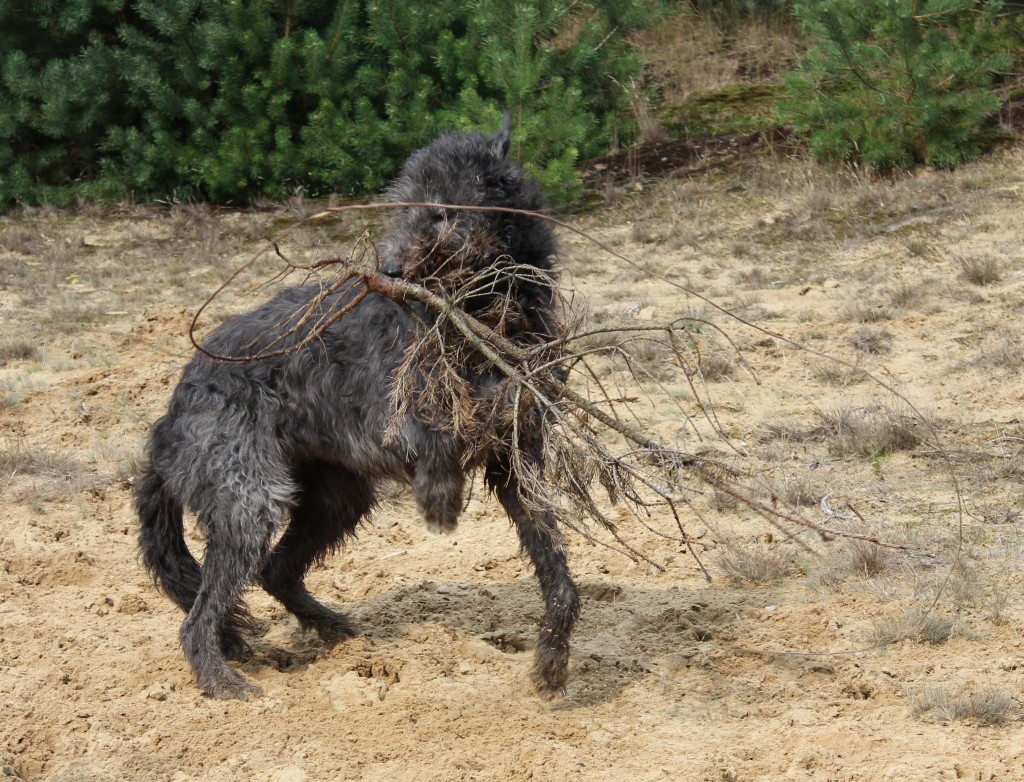 Inheriting- and environmental factors for a stomach torsion.
Inheriting- and environmental factors for a stomach torsion.
On the American Deerhound List, Mary Ann Rose wrote that Ingrid S. Bell has enumerated inherited and environmental factors that appear to be involved in causing a stomach torsion. Here is a brief summary of his article.
Characteristics of a dog that has predisposing factors:
O Large and very large breeds that have a very deep chest (increased incidence at elevated breast depth – width ratio).
O Chapped bodily condition is associated with increased risk.
O Anxious and nervous dogs are at greater risk.
O A dog whose first degree family members (elder, brother, sister) have had a stomach torsion, have a greater chance of developing it (the conclusion is that it is linked to the anxious temperament that is inherited).
O Diet related Risk factors: dry foods that contain an oil or fat in the first 4 ingredients because fats slow down the stomach emptying in the duodenum and feeding a single type of food, especially only dry feed; One meal per day.
O Fermentation of stomach gases (no atmospheric gases).
O (Probably) Raised food bins.
O The presence of a stomach foreign body is an important risk factor for gastric dilation and volvulus (GDV) (if, during an examination of the gastrointestinal tract, a foreign body is defined as indigestible or slowly digestible material and That causes clinical signs or is 10 cm long or 2 cm wide).
O With aging the risk of a stomach torsion is greater … this may be related to increasing stretching of the hepatogastrische tires. 
Factors that reduce the likelihood of a stomach torsion:
O Cheerful character.
O Moderate daily and postprandial (after eating) activity proved beneficial for dogs susceptible to a stomach torsion.
O Adding table residues, fish and eggs to the meal.
O Feeding several small meals a day.